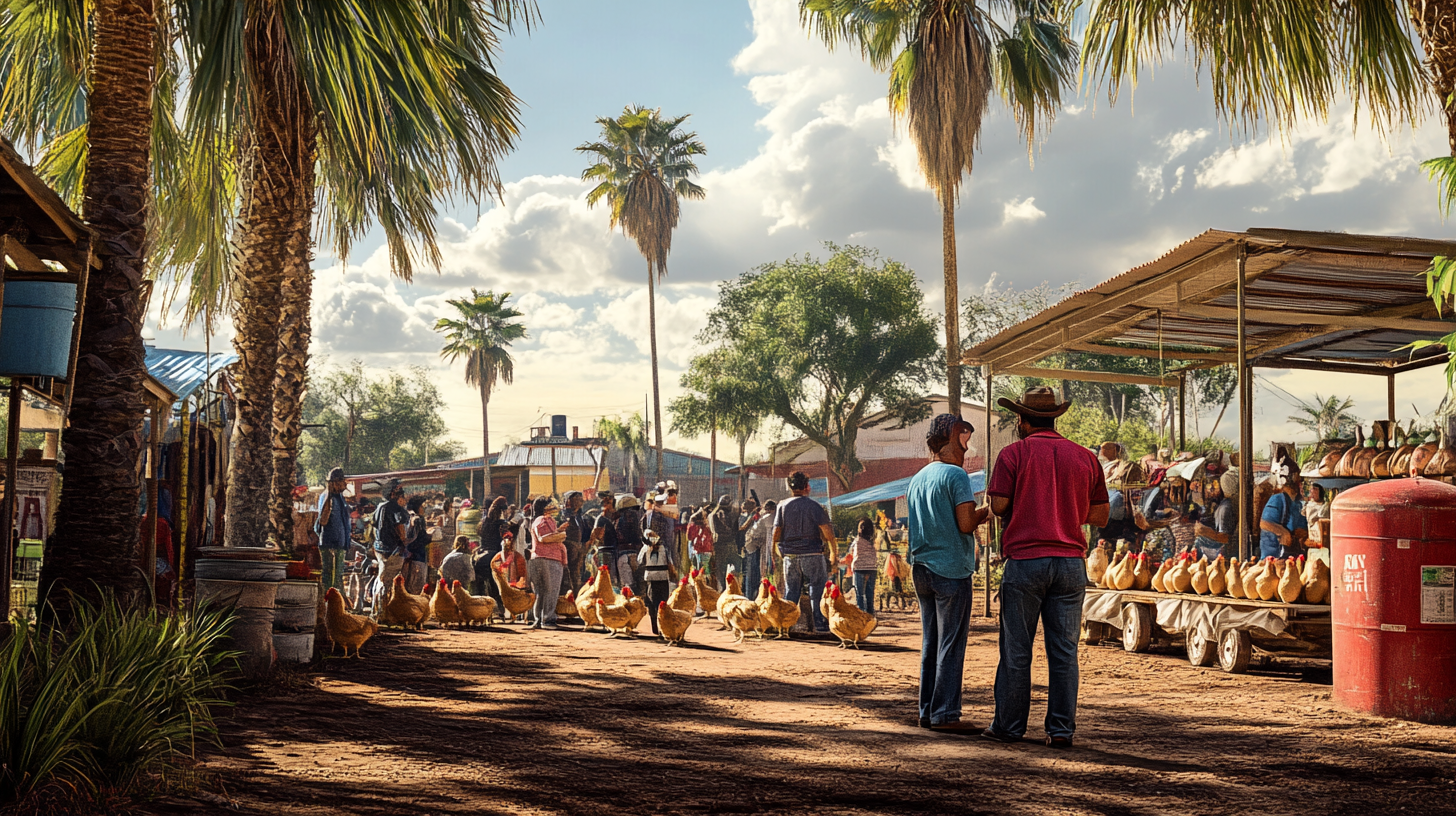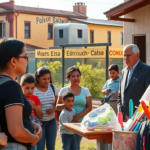High Egg Prices Drive Weslaco Community to Embrace Urban Farming
In response to soaring egg prices, residents of the Rio Grande Valley are flocking to a local Weslaco poultry farm to purchase live hens, embracing a return to back-to-basics urban farming. As egg costs have quadrupled over the past few years, Valley residents are finding alternative solutions to maintain access to fresh eggs without financial strain.
The Trend at Weslaco Poultry Farm
The bustling activity at Three Kings Poultry Farm in Weslaco was apparent when more than 1,000 chickens were sold in just one morning. Priced at $7 per hen or $6 in bulk purchases exceeding ten hens, the appeal for sustainable egg production is evident. The farm opened its gates at 8 a.m., and by 10:30 a.m., a significant portion of their stock was already making its way to new homes.
“We’re seeing a surge in interest from local families seeking to raise their own hens as a cost-effective alternative to purchasing eggs,” said farm owner Daniel Lopez. “The demand today has been unlike any other time we’ve witnessed.”
Understanding the Price Surge
According to the U.S. Bureau of Labor Statistics, egg prices have skyrocketed from $1.50 per dozen in 2021 to $7.35 per dozen in 2025, largely due to a series of bird flu outbreaks across the nation. Such a steep rise has pressed consumers to seek alternatives, gravitating toward self-sufficiency in food production.
Juan Santos, a Laredo resident and one of the many who purchased hens, remarked, “It’s cheaper to buy the chicken than to continuously spend on eggs. Owning a chicken gives me control over my food supply, especially with prices as high as they are.”
Local Impact on the Community
This rising trend reflects a broader shift in the community towards sustainability and resilience. The high egg prices have catalyzed a movement among Valley residents to explore local farming. Not only does this have economic benefits, but it also fosters community engagement and education on agricultural practices.
Hidalgo County’s own Cowboy Teo Martinez has been pivotal in advising new hen owners on the essentials of chicken care. “It’s about maintaining a healthy space for them,” Martinez shares. “Allow the hens to roam freely or, if necessary, keep their enclosures clean and provide fresh water daily.” His emphasis is on the joy and satisfaction of producing one’s own food, despite the work involved.
Challenges and Considerations
As with any new venture, raising chickens comes with its challenges. Housing, maintaining cleanliness, and ensuring nutrition can be demanding, particularly for those new to rural farming. Moreover, some municipalities may have ordinances regarding the ownership and number of chickens permitted per household. Therefore, prospective chicken owners are advised to consult local regulations to avoid potential penalties.
The community-driven shift is not just about circumventing high egg prices but also connecting with a more self-sufficient lifestyle. “It’s fulfilling to see our community embracing sustainable practices,” says Lopez. “What started as necessity can lead to a passion for many, contributing positively to the local community.”
Future Implications for the Valley
If this trend continues, Weslaco and the broader RGV could see a micro-economy form around local farming supplies, community workshops, and support networks for amateur farmers. Points of interest like Three Kings Poultry may become hubs of agricultural expertise and learning.
While this change highlights local ingenuity and adaptability, it also casts light on the vulnerabilities in our current food supply chain. Should unforeseen disruptions occur, communities that have built resilience through localized food production could weather such storms with greater ease.
Concluding Thoughts on the RGV Community’s Response
The movement toward backyard farming underscores the community’s resilience and capacity to adapt in challenging times. It reshapes not only how residents source their food but also strengthens bonds among neighbors and community members as they share knowledge and resources.
With the right guidance and support, this shift could be more than a reactionary measure—it could set a lasting foundation for sustainability in the Rio Grande Valley’s future. To learn more about raising chickens and the supportive resources available, residents are encouraged to connect with local agricultural programs and community workshops.
In essence, as Valley residents continue to navigate the challenges of high egg prices, they harness innovation, community spirit, and agrarian traditions to forge a path forward—one hen at a time.







